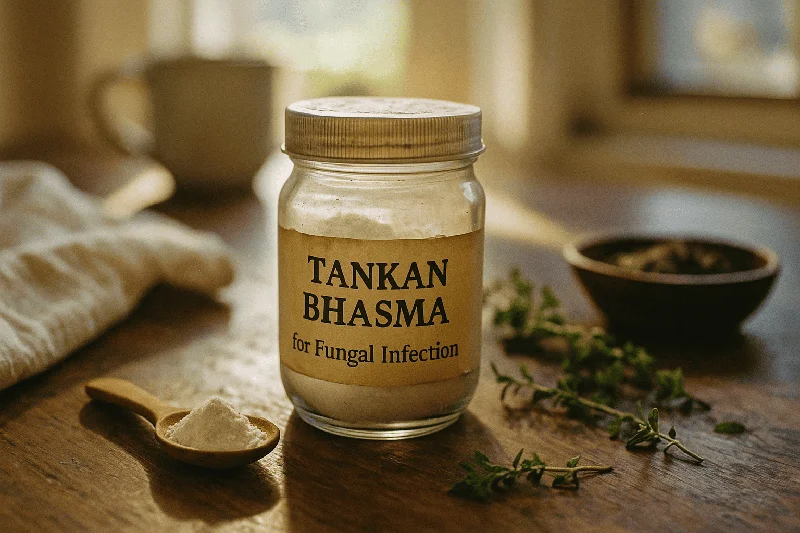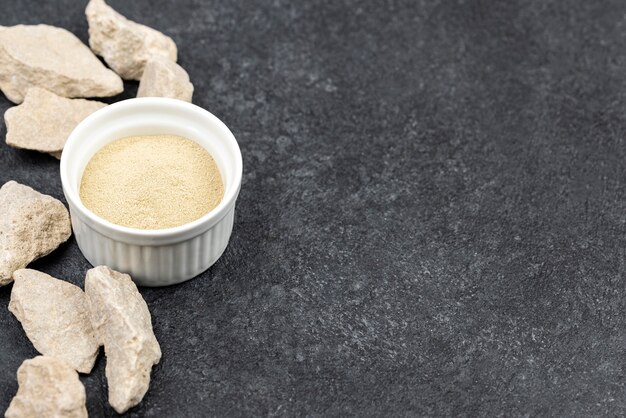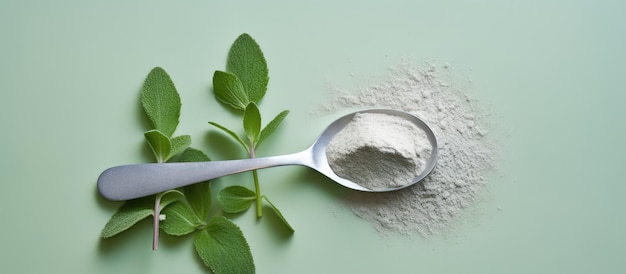Ask Ayurvedic doctor a question and get a consultation online on the problem of your concern in a free or paid mode. More than 2,000 experienced doctors work and wait for your questions on our site and help users to solve their health problems every day.
Shop Now in Our Store
Tankan Bhasma for Fungal Infection – Benefits, Uses, and Ayurvedic Treatment

Introduction to Tankan Bhasma for Fungal Infection
Tankan Bhasma is an Ayurvedic preparation primarily used for treating various types of infections, including fungal infections. It is made by calcining Copper (Tamra) in a traditional Ayurvedic process that enhances its medicinal properties. Tankan Bhasma is known for its antimicrobial, anti-inflammatory, and antifungal properties, making it a powerful remedy for fungal infections affecting the skin, nails, and other parts of the body. In Ayurveda, Tankan Bhasma is used to restore balance to the Kapha and Pitta doshas, which are often implicated in fungal growth and skin infections. By applying this potent remedy, the body’s natural defenses are supported, promoting healing and preventing the recurrence of fungal infections.
Historical Roots & Ayurvedic Significance
In Ayurveda, the use of Bhasmas (medicated ash preparations) dates back centuries, and each Bhasma is designed to address specific health issues. Tankan Bhasma, being derived from copper, is believed to possess the ability to purify the blood, improve skin health, and combat infections. Copper is an essential element in Ayurveda for its role in maintaining the body's metabolism and boosting immunity. It is also traditionally used to treat conditions like fungal infections, eczema, and other skin disorders. Ayurvedic texts highlight the therapeutic benefits of Tankan Bhasma in managing infections and restoring the body's balance, making it a crucial component in many Ayurvedic formulations.
Key Benefits of Tankan Bhasma for Fungal Infections
1. Antifungal and Antimicrobial Properties
Tankan Bhasma is highly valued for its antifungal and antimicrobial effects. It helps combat fungal infections by inhibiting the growth of fungi and microorganisms. When used topically or taken internally, it helps to reduce the severity of fungal infections such as ringworm, athlete's foot, and fungal skin infections, promoting faster healing.
2. Blood Purification and Skin Health
Tankan Bhasma purifies the blood, which is essential for overall skin health. Fungal infections often thrive when there is an imbalance in the body’s internal systems, leading to impurities in the blood. By detoxifying the body, Tankan Bhasma helps restore healthy circulation, improving the skin’s ability to fight off infections and inflammation.
3. Balances Kapha and Pitta Doshas
In Ayurveda, fungal infections are often linked to an imbalance in the Kapha and Pitta doshas. Kapha is associated with excess moisture, while Pitta governs heat and inflammation. Tankan Bhasma works to balance these doshas, reducing the conditions that allow fungi to thrive. By regulating the doshas, it helps prevent the recurrence of infections and supports overall skin and immune health.
4. Improves Immunity
Tankan Bhasma enhances the body's natural immune response, helping it fight off pathogens, including fungi. Its ability to purify the blood and support liver function further boosts immune function, which is crucial for combating fungal infections effectively and preventing them from reoccurring.
How Tankan Bhasma Works for Fungal Infections
Tankan Bhasma works on a molecular level by purifying the body’s internal systems, including the blood and lymphatic system. The copper content in Tankan Bhasma helps cleanse toxins from the body, improving circulation and promoting healing. The antimicrobial properties of the Bhasma directly target the fungi responsible for causing infections, inhibiting their growth and reproduction. Additionally, Tankan Bhasma’s ability to balance the doshas ensures that the body remains in a state of equilibrium, reducing the likelihood of future infections.
Recommended Dosage & How to Use Tankan Bhasma
Tankan Bhasma should always be used under the guidance of a qualified Ayurvedic practitioner. The typical dosage for Tankan Bhasma is:
-
Internal Use:
- Adults: 125 mg to 250 mg, taken once or twice a day with honey or ghee, as recommended by a practitioner.
- Children: The dosage is usually lower and should be determined by an Ayurvedic doctor based on the child’s condition and age.
-
Topical Application:
- Tankan Bhasma can be mixed with a small amount of water or coconut oil to form a paste and applied directly to the affected area. It can be used on fungal-infected areas like the skin, nails, or scalp.
- For persistent infections, apply the paste two to three times daily.
Note: Always consult an Ayurvedic practitioner before using Tankan Bhasma, especially if you have underlying health conditions, are pregnant, or are nursing.
Potential Side Effects & Precautions
While Tankan Bhasma is generally considered safe when used as directed, there are some precautions to keep in mind:
- Allergic Reactions: Some individuals may be sensitive to copper or other ingredients in the formulation. Perform a patch test before using it on large areas of the skin.
- Dosage: Exceeding the recommended dosage can lead to digestive upset or other side effects. Always stick to the prescribed amount.
- Pregnancy and Nursing: Pregnant or breastfeeding women should avoid using Tankan Bhasma unless advised by a healthcare provider.
- Underlying Health Conditions: People with kidney or liver conditions should consult their practitioner before using copper-based products like Tankan Bhasma.
Frequently Asked Questions For Tankan Bhasma for Fungal Infection
What is Tankan Bhasma used for?
Tankan Bhasma is primarily used for treating fungal infections, particularly those affecting the skin, nails, and scalp. It is also used to purify the blood and improve skin health.
How does Tankan Bhasma help treat fungal infections?
Tankan Bhasma has antifungal, antimicrobial, and anti-inflammatory properties that help eliminate fungi from the body, reduce symptoms like itching and redness, and promote skin healing.
How should Tankan Bhasma be applied for fungal infections?
Tankan Bhasma can be applied topically by mixing it with water or coconut oil to form a paste. This paste can be applied directly to the infected area two to three times a day.
Can Tankan Bhasma be used for all types of fungal infections?
Yes, Tankan Bhasma can be used for various fungal infections, including ringworm, athlete’s foot, and other skin fungal conditions. It is also beneficial for treating fungal infections on the scalp or nails.
Is Tankan Bhasma safe for long-term use?
Tankan Bhasma is typically safe when used under the guidance of an Ayurvedic practitioner. However, it is important not to exceed the recommended dosage, and it should be used with caution in individuals with underlying health conditions.
Are there any side effects of using Tankan Bhasma?
Possible side effects include mild digestive upset or allergic reactions, particularly if used in excess or by individuals sensitive to copper. Always follow the prescribed dosage and perform a patch test for topical use.
How long does it take to see results from Tankan Bhasma?
The time to see results varies depending on the severity of the fungal infection. In most cases, noticeable improvement can be observed within a few weeks of consistent use.
Conclusion & Expert Insights
Tankan Bhasma is a powerful Ayurvedic remedy for treating fungal infections, thanks to its antifungal, antimicrobial, and blood-purifying properties. By balancing the doshas, improving immunity, and promoting skin health, Tankan Bhasma supports the body’s natural healing process. Whether used internally or topically, this traditional remedy offers a holistic approach to managing fungal infections. As with all Ayurvedic treatments, it is essential to consult with a qualified practitioner to ensure proper dosage and application.
References & Further Reading
- Sharma, P.V. (1995). Ayurvedic Healing: A Comprehensive Guide.
- Lad, V. (2002). Ayurveda: The Science of Self-Healing.
- Journal of Ayurveda and Integrative Medicine for research on antimicrobial and antifungal Ayurvedic herbs.
- National Institute of Ayurveda:
This article is checked by the current qualified Dr Sujal Patil and can be considered a reliable source of information for users of the site.



